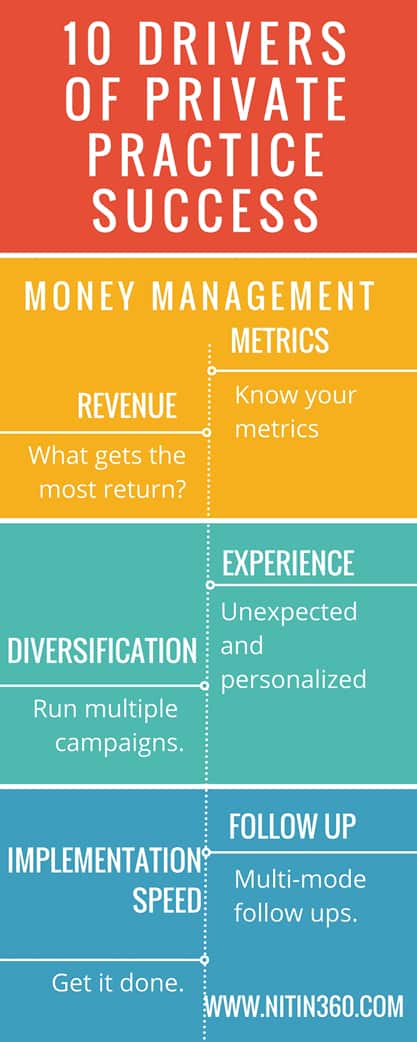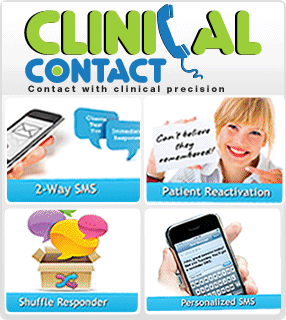Thanks to Joe, Sarah Tim, Larry, Beth and everyone for their feedback on the plan. Let’s dive into Day 4.
Day 4
It’s time for some serious thinking and ‘trimming the fat’ from your practice today.
Take a close look at the list from Day 3, and further refine the list based on the answers to the following questions:
– Is this task so important that it must be done by me, and me alone?
– Is this task generating revenue for my private practice?
– Can this task be accomplished with less time (more efficiently) and by someone else?
– What will happen if I eliminate this task of from my day-to-day activities (or have someone else do it)? Will it affect my business?
Day 5
Managing employees has never been more important, especially in today’s economy. How do you motivate employees and manage them more effectively?
It’s simple – make them more accountable, and encourage creative thinking to maximize efficiency.
A simple way to manage employees is to request them to fill out the answers to the following questions at the end of each business day.
– What exactly did you do today? (Number of visits completed, number of phone calls made, amount of paperwork filled out)
– What difficulties did you face today?
– What questions do you have for me?
– What is your plan to improve efficiency tomorrow?
While this may sound very basic, it’s a razor ship feedback form, with hidden emotional intelligence. The built-in accountability mechanisms here will get
your staff in the right mindset to function better, boost productivity and plan better, creating a sense of ownership and ’emotional investment’ in your
practice.
Day 6
Let’s play ‘accountant’ to your practice. Don’t shy away from it, embrace it head on. If I can do it, you can. Personally, I have an aversion to numbers,
especially the ones in my balance sheet – income and expenditure. Back in the days when Ritika and I were pinching pennies, I was hesitant to check my bank
account, because I feared that the balance would be too low and the credit card debt too high. Not facing my fears of numbers resulted in several missed opportunities to identify financial loopholes, which could have boosted my bottom line much sooner.
– Since employees are often the biggest expense in private practice, list the total number of employees and their individual salaries.
– You also want to total all your monthly operating expenses. This includes your lease, power bills, costs of stationary, promotional material and
miscellaneous expenses.
– This takes some doing, but it is the single most important measure of the financial feasibility of your practice. You must account for every single cent
that is spent.
– Now, total up the list of outstanding invoices and cash owed to your practice. Also estimate the monthly revenue of your practice based on total number of
patient visits and average revenue per visit.
– Now that you know your total income, subtract it from the total expenditure to determine the ‘net income’ of your practice each month.
– Divide this number, the ‘monthly net income’ by the total number of hours YOU spend in your practice each month.
– You now have your hourly wage for working in your clinic. Let’s say your net income is $8000 in your private practice, and you spend 40 hours a week in
your clinic (I know private practice owners who spend upwards of 50 hours a week), your income per hour is $31.25
– Any tasks that DO NOT require your hands on involvement (patient care, paperwork etc) should be delegated to someone whom you pay less than $31.25 an hour.
This will allow you to focus on the ‘big picture’ tasks and not drown in trivial pursuits.
– Analyze expenses and determine how you can eliminate unnecessary expenditures and maximize collections.
The best way to maximize revenue collections in your practice is to have more patients and increase the products and services provided to each patient.
Ask yourself, how can you balance income and expenditure to improve net income in your practice?
At the end of day 6, you should be able to identify
– The tasks you want to focus on
– The tasks you should NO LONGER focus on.
– The key drivers for the growth of your practice.
– How you can spend more time improving the key drivers.
Day 7 – Relief that it’s all over!
On this day, you will create the “Get Rid Of It” and “Focus More On It” worksheet
By now, you should have a list of all the factors unnecessary to the day-to-day operations of your practice.
– Your goal is to eliminate the ‘junk’ from your practice and identify the key factors that need to be nurtured and nourished to trigger further growth.
– Chances are, you may need to fire someone, introduced efficiency patterns to conserve on power bills etc.
– For example, you may discover you need to spend more time providing positive reinforcement to that one single therapist (who feels neglected and overworked) and thinking of quitting, but is very popular with patients. You may need to spend less time on tasks like physical therapy billing and marketing (opting instead for an automated physical therapy marketing system like http://www.therapynewsletter.com).







